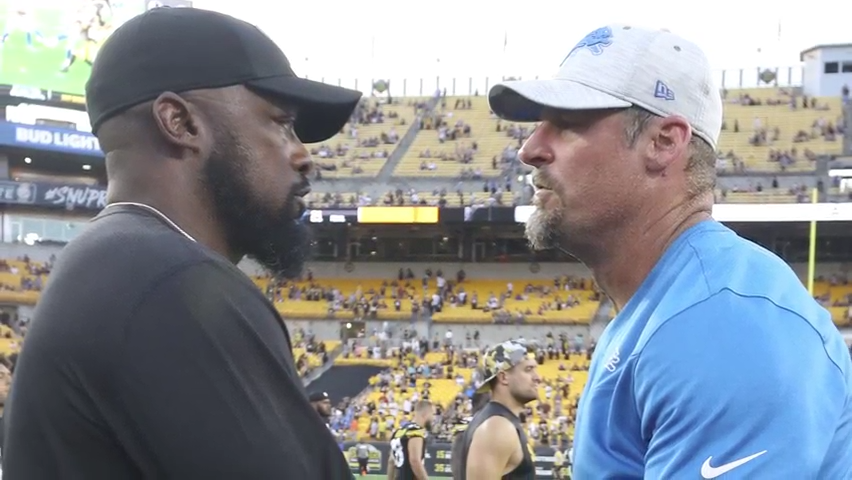

Why lack of diversity in QB, OL coaches matters in NFL
USA TODAY Sports investigates where diversity is lacking in NFL coaching staff across the league, and why it matters.
SportsPulse
Before Tua Tagovailoa was hit and wobbled and stumbled his way to the sideline on Sunday against Buffalo. Before he’d play just four days later against the Bengals. Before he’d suffer a frightening head injury in that game, splayed on the ground, with terrifying phrases like decorticate posturing and Second Impact Syndrome being tossed about by experts. Before all of that … there was a name you will know, from many years before, who is relevant now: Troy Aikman.
Aikman is a broadcaster and Hall of Famer, but years ago, as a player, Aikman was something else besides a remarkable quarterback. He was one of the greatest symbols of the NFL’s horrific concussion era. Aikman believes he suffered at least a half-dozen during his 12-year career, which lasted from 1989-2000.
“I had one my rookie year (1989),” Aikman once said in an interview. “I was knocked out cold for 10 minutes. I had blood coming from my ear. The second was I got knocked out in the ’93 season NFC championship game against San Francisco. I got knocked out in the third quarter. I spent the night in the hospital. They asked me questions. I didn’t know what planet I was on. I still to this day have no recollection of ever having played in that game. So whenever I see footage of that game, it’s like somebody else is out there doing it.”
Aikman would play through many of those concussions, just as Steve Young did. Concussions ended Young’s career.
“It’s awful. It’s scary,” Young said in 2015. “My generation, people who played with me, they’re suffering from football.”
There were Aikman and Young. There was Mike Webster. There was Al Toon, who suffered from nine diagnosed concussions. There was Merril Hoge, who had a concussion so severe he blacked out and went into brief cardiac arrest. There was Ted Johnson, who would be in games, out of position, not knowing how that happened.
There was Wayne Chrebet, who had six concussions in 11 years, and who once said: “When you’re fighting for your job every day and have to put food on your table, there’s a lot of pressure to get back out there. Most did. I did.”
There were many others. Hundreds and perhaps thousands of others.
MORE: What is the NFL’s concussion protocol? Tua Tagovailoa injury puts policy in spotlight
WHAT WE KNOW:Dolphins QB Tua Tagovailoa’s head, neck injuries
OPINION:Tua Tagovailoa’s second distressing injury in four days is ugly moment for NFL
Their suffering, and other critical events like the class action concussion lawsuit, forced the NFL to change –the league was shamed and litigated into acting, really — how it treated its players’ mental health. Their suffering was supposed to end those barbaric days.
The disgraceful handling of Tagovailoa shows that isn’t really the case. What happened to him takes us back to those dark and ugly times, when the NFL openly and wantonly displayed a reckless disregard for the mental health of its players and systemically treated them like drones. You’re dinged. Your bell is rung. Back in the game. Shut your mouth about those headaches.
We were supposed to be long past those days or, at least, the structural mechanisms put in place were supposed to stop the staggering and gross displays we saw with Tagovailoa.
After all, three things emerged from the concussion era after years of litigation, evolution, science advancements, the corralling of the NFL’s medical bullying and the rise of players realizing they have the power to control their lives and careers:
First, independent doctors were supposed to protect players from themselves. That didn’t happen.
“Everyone working in sports knows that the athlete’s default setting is to play through injury,” tweeted former Packers team executive Andrew Brandt on Friday. “They always want to play. It is up to the adults in the room to protect players from themselves. They failed Tua on Sunday and last night.”
Second, winning was supposed to take a back seat to mental health.
I believe that’s the crux of what happened here. The Dolphins are good again. Really good, actually. Tagovailoa is obviously a huge part of that success and everyone — Tagovailoa, the team, the NFL — wanted this story to continue. So winning, to me at least, took precedent.
Third, sensibilities changed. The players and media no longer cheered on players as brave or tough for playing through head injuries. This part, at least, held true. Look at social media after both Tagovailoa hits. There was massive outrage from experts, players and fans. No one questioned Tagovailoa’s heart. Almost everyone questioned whether the team and league have one.
Some of this was extremely avoidable. Chris Nowinski of the Concussion Legacy Foundation sent a tweet on Thursday afternoon, hours before the game, that seemed like it originated from the future: “If Tua takes the field tonight, it’s a massive step back for #concussion care in the NFL,” Nowinski wrote. “If he has a 2nd concussion that destroys his season or career, everyone involved will be sued & should lose their jobs, coaches included.”
Nowinski also said the Tagovailoa debacle reminded him of another incident, which happened in 2017. Quarterback Matt Moore was hit in the head, Nowinski said, and couldn’t stand for some two minutes. He missed one play.
It’s unlikely the Dolphins will fire anyone because if there’s one constant we’ve seen throughout football’s sordid concussion history, it’s that there is minimal accountability. The class action lawsuit didn’t significantly impact the NFL, and few people ever lose their jobs for mishandling concussions.
Thus, the games go on. The league goes on.
It was all supposed to be better. That may have been wishful thinking.
